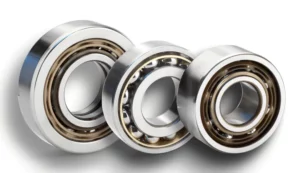Project Report For Bearing Manufacturing
Introduction
Project report for Bearing Manufacturing is as follows.
They are so important to the machine business that they have been dubbed the “bread and butter” of the industry. They’re found in a variety of machines, but since they function in the shadows, most individuals who aren’t in the machine sector are likely to be confused when they hear the name.
So, in this, the first “Bearing Column,” we’ll go over the fundamentals of bearings and provide a quick overview of the services they fulfil.
Project Report Sample On
Bearing Manufacturing
Get Completely Custom Bankable Project Report
Bearings are “components that aid in the rotation of things.” They provide support for the rotating shaft inside the apparatus.
Automobiles, aircraft, power generators, and other machines need bearings. They’re even found in commonplace home goods like refrigerators, vacuum cleaners, and air conditioners.
Bearings help the wheels, gears, turbines, rotors, and other rotating shafts of such devices to operate more smoothly.

As a result, all types of machines need a large number of shafts for rotation, which means bearings are virtually always employed, earning them the moniker “the bread and butter of the machine business.” Bearings may seem to be basic mechanical pieces at first look, yet without them, humans would perish.
Type, size, distribution channel, machine type, end-use, group, and geography are all segments of the worldwide bearing market. The market has been divided into two types: ball bearings and tapered bearings.
The worldwide bearing market has been divided into five categories based on size: 30 to 40, 41 to 50, 51 to 60, 61 to 70, and 70 and beyond. The various distribution channels that are included in the worldwide bearing industry are original equipment manufacturers (OEMs) and aftermarket.
Market Potential Of Bearing Manufacturing
Expenses

Product Cost Breakup

Reveneue Vs Expenses

Market Trend

The worldwide bearing market was worth $107.46 billion in 2019 and is expected to grow at a CAGR of 6.1 percent to $143.53 billion by 2027.
Bearings are machine components that facilitate relative motion and serve to decrease friction between moving elements. Bearings are used in a variety of sectors, including automobiles, wind turbines, construction and mining gear, agricultural machinery, machine tools, and so on. It is used in automobiles to guarantee that cars, electric vehicles (EVs), and other types of vehicles, such as light commercial vehicles and big vehicles like trucks, function smoothly.
Because of the increased usage of bearing goods in different end-use sectors, rolling mills, and electric cars, the worldwide bearing industry is growing insignificance. Technological advancements have increased the overall efficiency of bearing goods in the vehicle industry, as well as their shelf life. NSK, for example, has created a gearbox bearing for railway engines that is low-maintenance and reliable.
Factors such as an increase in the use of bearings in railways, electric vehicles, and rolling mills, followed by an increase in the use of bearings in motors, demand for automotive electrification, and demand for bearings in continuously variable transmission (CVT) have boosted the global bearing market’s demand.
However, the worldwide bearing market’s development is hampered by bearing damage caused by electric cars, rising vehicle electrification, changing raw material prices, and expensive maintenance costs.
Furthermore, rising concern about green vehicles and constant development in the automobile industry, as well as the emergence of sensor bearing units and the advancement of additive manufacturing technologies and materials to manufacture bearings, are factors that provide lucrative opportunities, resulting in the global bearing market’s growth.
